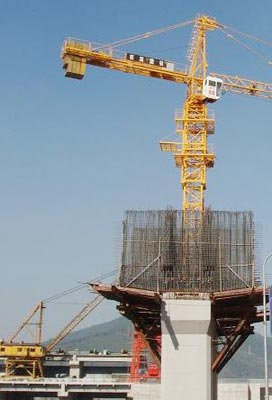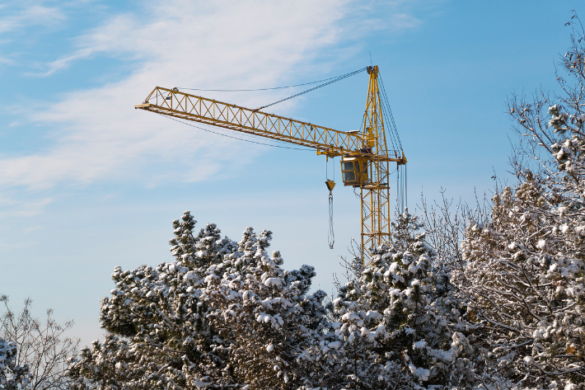The following is a brief selection of safety considerations, more information on this subject can be found in the relevant BS Codes of Practice . A tower crane should only be erected or dismantled and tested by competent persons, i.e. an engineer and erection crew trained in the erection and dismantling of that type of tower crane.
A tower crane should only be operated by a trained and competent operator who is physically fit, including eyesight and hearing, conversant with the type of crane, and able to cope with the conditions existing on site.
Where the driver is required to move loads under the control of another person, a suitable slinger/signaller should be provided who is conversant with the lifting capabilities of the tower crane and able to communicate clearly with the driver via hand or radio signals.
Any method of lifting other than the recommended vertical lifting of loads should be actively discouraged, as damage may be caused to the crane..
The tower crane driver must be capable of carrying out a weekly inspection of his crane and should be given sufficient time in which to do this. A report of such an inspection must be made in an appropriate document.
The tower crane will have a maximum service wind speed, usually about 72 kph (45mph), this is acachine? wind speed and would have to be substantially reduced according to the area and weight of the load being handled by the crane. The crane operator must be given sufficient authority to decide when the crane should be put out of service?because of high winds and his inability to control the load.
The tower crane must always be in a position to rotate (slew freely) when it is placed into the out of service? condition. The slew brake should not be left on under normal conditions.
When the selection of a tower crane is being made against particular environmental considerations, the following are an example of what might have to be taken into account.
1. Overall area to be covered;
2. The height of the building;
3. The required speed of the lift;
4. Weight of critical loads;
5. The type of base or mounting;
6. Existing ground conditions;
7. All proximity hazards;
8. Types of jib;
9. Erection;
10. Dismantling.
The working height of a free-travelling crane is limited (see the manufacturer specifications).
A free travelling crane can move along its track only at a low speed, and careful planning of the daily work programme may be necessary for obtaining the maximum production.
When two or more tower cranes are employed on a site, each should be erected to a different working height to prevent the possibility of collision between the jibs. Although the jibs may over slew? the load may still contact the lower crane. Rail tracks should be placed strategically to prevent the jib of one crane hitting the tower of another.
Smaller tower cranes with lighter lifting capacity are usually more suitable on projects where traditional methods of building in brick, concrete etc. are employed. In these situations the lorry or crawler mounted tower crane may be the right one for the job.
The bigger cranes, with their greater lifting capacities, are more suitable for projects where constant off-loading and placing of heavy prefabricated units occur. Here, speed may have to be sacrificed in the interests of precision lowering and placing.
On some projects it may be more economical to use a rail-mounted crane. On others a static or climbing crane may be the answer.
On some sites, the proximity of high obstructions will prevent the use of an horizon-jib tower crane, and a luffing (erricking) jib tower crane will have to be employed. The luffing-jibbed tower cranes have all three base variations; free-travelling, static and climbing.
Source:
http://towercrane-cn.com/info/2010/Tower-Crane-Safety_58.html



